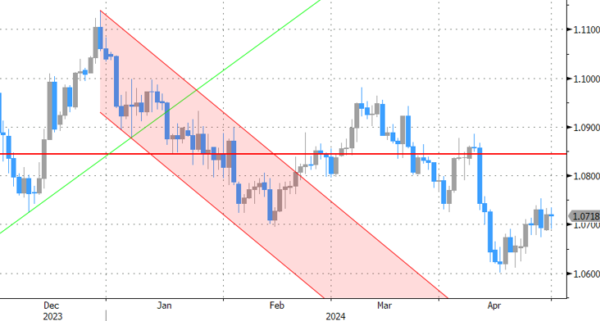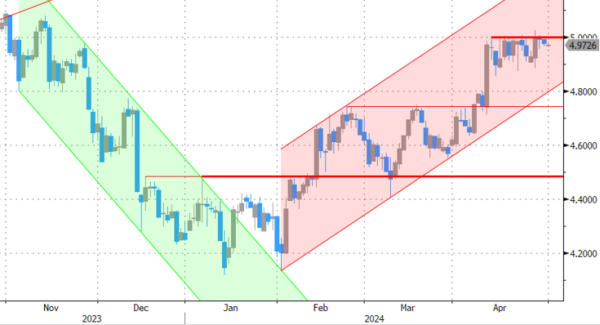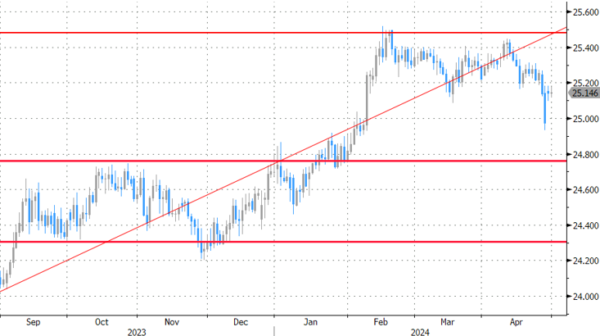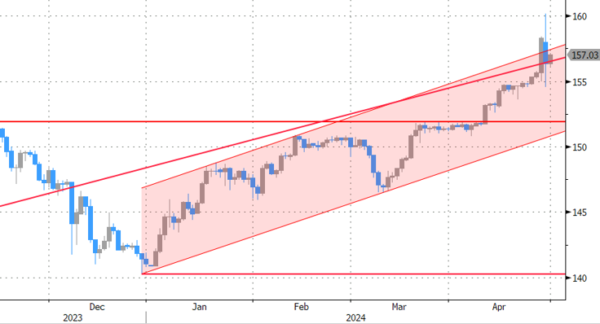Markets
What a difference some inflation prints make… Following the Fed’s pivot in November and December of last year, markets rapidly turned to expecting policy rate cuts. The language in official statements changed from assessing to whether any additional policy firming might be appropriate to considering when it would be appropriate to reduce the target policy range. The balance of risks similarly shifted from solely focused on (upward) inflation risks to a more balanced risk analysis in line with the Fed’s dual mandate (full employment & price stability). At the top of the dovish repositioning, around the turn of the year, markets discounted a cumulative 50 bps of Fed rate cuts for tomorrow’s FOMC meeting. On the eve of the meeting, the probability of a rate cut is virtually zero. Subsequent inflation misses, strong price momentum and base effects all suggest that US inflation is heading towards 4% rather than 2% in coming months. In combination with decent growth momentum and a still robust labour market, this suggests that the tone of tomorrow’s policy statement and Powell’s press conference will shift in a hawkish manner. At the recent IMF meetings, Powell already acknowledged that recent data have clearly not given the Fed greater confidence on disinflation. The onus could thus return to stressing the need of higher for longer, rather than searching for the appropriate settings to implement a first rate cut. We don’t expect Powell to bring (potential) rate hikes already back into play. US money markets have discounted a new hawkish pivot. They are split between one or two policy rate cuts this year. With the November presidential election “interfering”, that’s either September-December or just December. In absence of any major shocks, we tend to err to the second scenario. We see the current upleg in (US) yields continuing though admit that there’s more room for an underperformance of the long end of the curve. For the US 2-yr yield to break back above the psychologic 5% border, it takes at least part of the market contemplating rate hikes again. If a push in real rates drives the long end of the US yield curve, it could nevertheless still benefit the dollar especially since such scenario risks weighing on risk sentiment.
Ahead of tomorrow’s key Fed gathering, some EMU and US data were on tap today. EMU growth accelerated more than hoped in Q1 (+0.3% Q/Q), exiting a mild H2 2023 recession. Growth was broad-based amongst EMU countries. April EMU CPI inflation printed in line with forecasts at a speedy +0.6% M/M though with the Y/Y-figure stable at 2.4%. The disinflation process in core inflation occurred slightly slower than hoped (2.7% Y/Y from 2.9%). The combination of both was sufficient to exert some selling pressure on EU bonds with EUR/USD marginally profiting. The EUR/USD move was short-lived as US Treasuries joined the bond sell-off after US labour costs (employment cost index) accelerated more than expected in Q1 (1.2% Q/Q from 0.9%). US yields currently add 3.4 bps (2-yr) to 4.9 bps (7-yr). Changes on the German curve range between +6.6 bps (2-yr) and +3 bps (30-yr).
News & Views
Czech GDP grew by 0.5% q/q in the first quarter of the year, topping estimates for a slightly lower 0.4%. Compared to the same quarter of last year, the Czech economy has expanded 0.4%. Details are not yet available though the Czech Statistical Office noted increasing domestic demand, especially household consumption and gross capital formation, helped the economy grow. External demand had a negative influence. Sticking to the CE region, Hungarian growth easily met the bar as well, coming in at 0.8% q/q vs expectations for 0.5%. The Y/Y figure jumped from flat to 1.1%. The statistical office made a sectoral divide in which it highlighted market services as the main contributor to growth. Real estate activities, information and communication specifically helped the sector perform strongly enough to offset a drag coming from the large industrial sector. Both the Czech crown and the Hungarian forint trade relatively stoic. The former is going nowhere around EUR/CZK 25.14. EUR/HUF eases a few ticks to 390.70 in unrelated (to GDP) trading.
Graphs
EUR/USD seeks a return above 1.07 after better-than-expected Q1 GDP, but faces counter from rising US labour costs

US 2y yield hovers near symbolic 5% as markets head into tomorrow’s hawkish (but priced in) Fed meeting

EUR/CZK: stoic CZK as CNB meeting (May 2) looms. Will Prague hint at possibly smaller rate cuts going forward?

USD/JPY: BoJ accounts reveal Monday’s intervention totaled JPY 5.5tn or 60% of the three 2022 FX interventions combined










